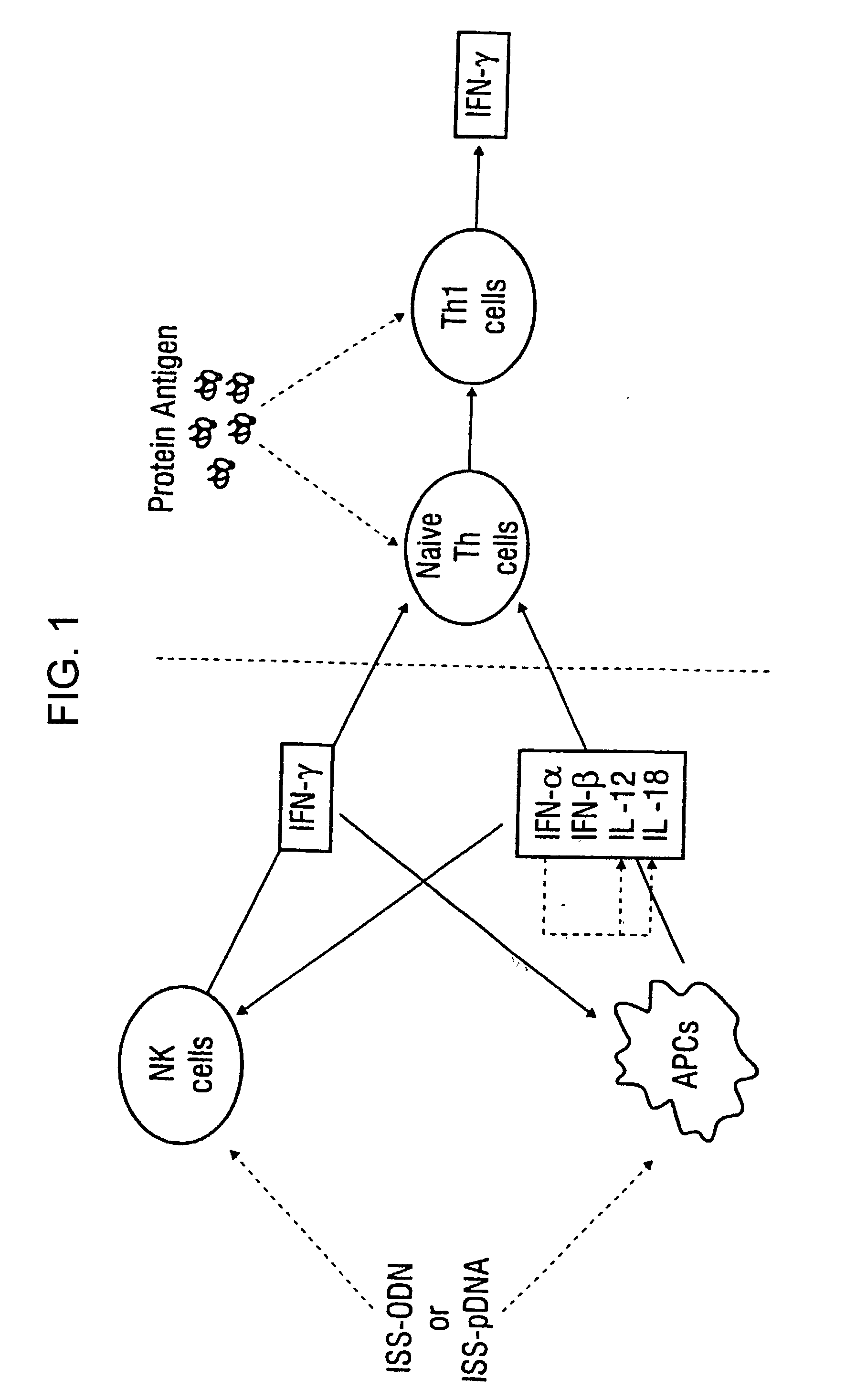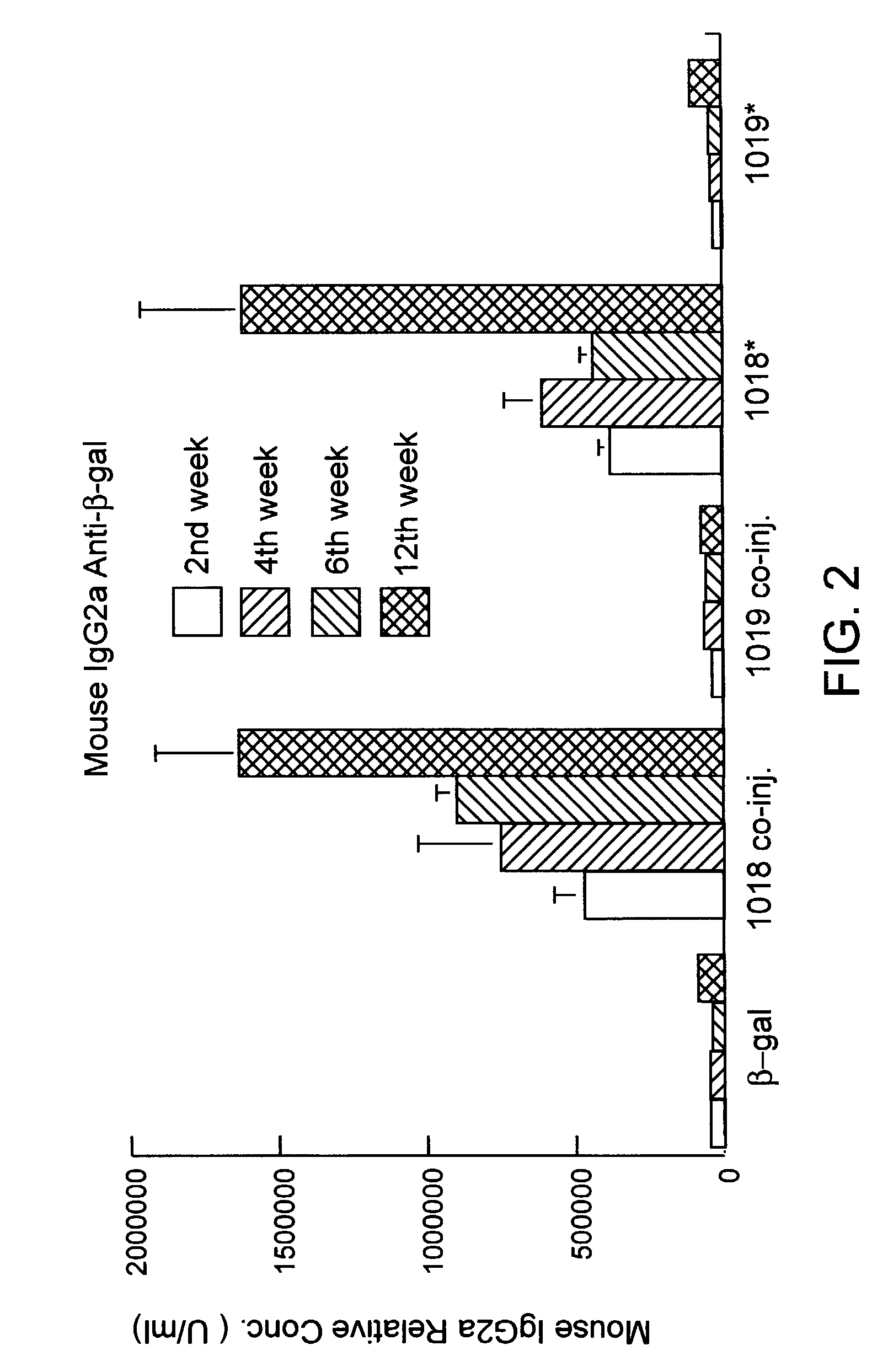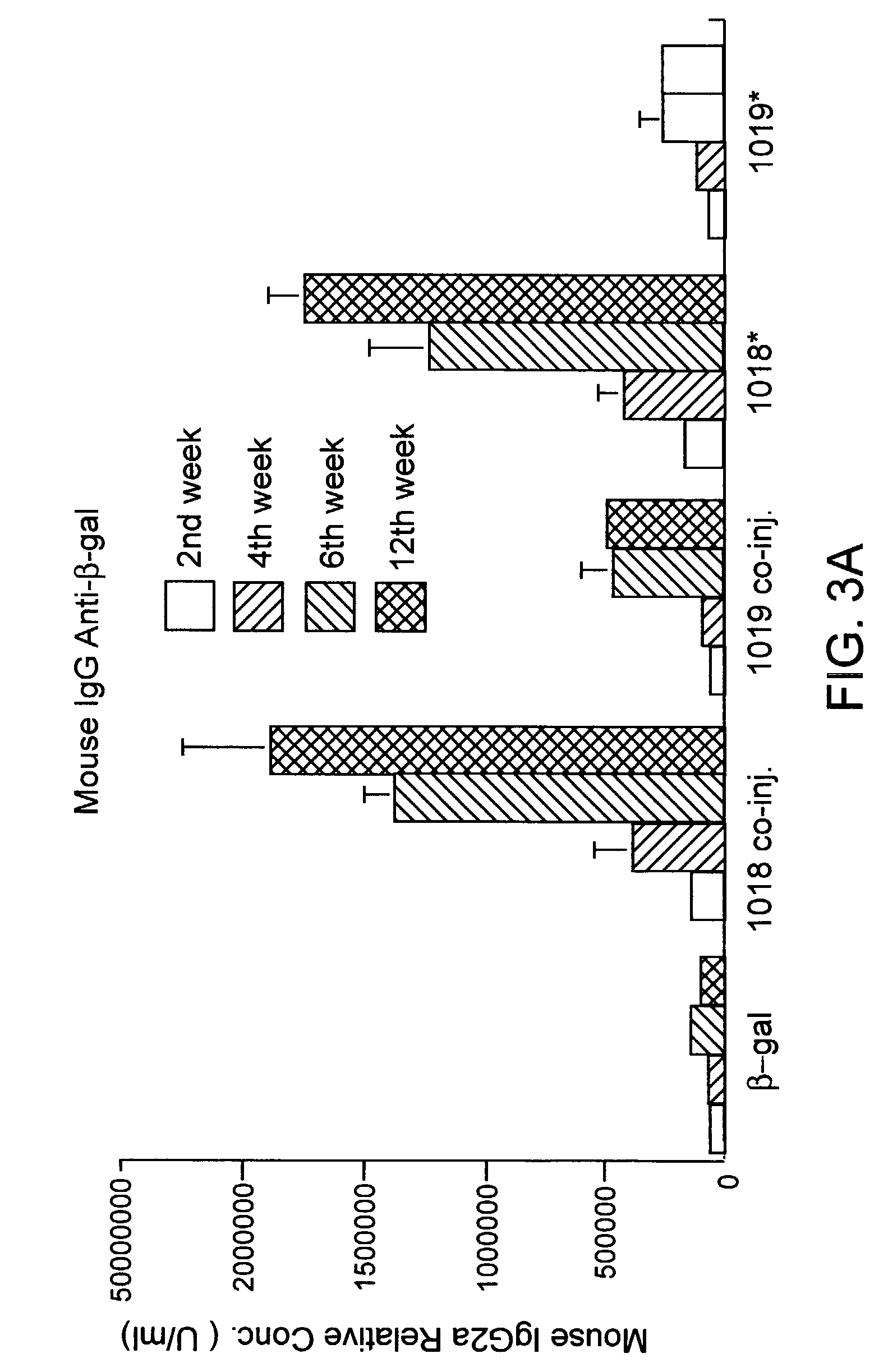Immunization-free methods for treating antigen-stimulated inflammation in a mammalian host and shifting the host's antigen immune responsiveness to a Th1 phenotype
a technology of immune responsiveness and immunity, applied in the direction of immunological disorders, antibody medical ingredients, peptide/protein ingredients, etc., can solve the problems of plasmids and cosmids being subject to degradation, inflammation can damage affected host tissues, and canonical immunization does not effectively stimulate long-term cellular immunity
- Summary
- Abstract
- Description
- Claims
- Application Information
AI Technical Summary
Benefits of technology
Problems solved by technology
Method used
Image
Examples
example ii
Reduction of Eosinophil Accumulation in Lung Tissue in a Murine Asthma Model by Administration of ISS-ODN
[0110] BALB / c mice, 6-10 weeks of age, were prepared as models of allergic asthma as described in Example I (subcutaneous injection of OVA followed by antigen challenge at a concentration of 50 mg OVA / ml PBS). Prior to each inhalation with OVA according to this scheme, sets of 8 mice each were treated as described in the Table below. Control mice were antigen challenged but untreated and naive mice were not challenged with antigen. All ISS doses were 100 .mu.g per administration. Dexamethasone (a conventional steroidal anti-inflammatory used in the treatment of asthma) doses were 5 mg / kg / mouse. Priming doses of antigen were 25 .mu.g OVA adsorbed to alum in 0.2 ml phosphate buffered saline (PBS). Challenge doses of antigen were 10 ml of 50 mg OVA / ml PBS. IN=intranasal; IP=intraperitoneal; SC=subcutaneous and N / A=not applicable.
1 Set # Material Received Route and Timing 1 Naive mic...
example iii
Antigen Independent Reduction of Eosinophil Accumulation in Lung Tissue
[0119] To evaluate whether the eosinophil suppression demonstrated by the data in Example II is dependent upon immune stimulation by the ISS-ODN, mice were sensitized to OVA using a conventional, Th2 stimulatory adjuvant (alum), treated with ISS-ODN or a control, and measured for eosinophil suppression before ISS-ODN stimulation of the mouse immune system would be expected to occur.
[0120] More specifically, groups of four mice were immunized with 25 .mu.g OVA in 1 mg alum by subcutaneous injection on days 1, 7, 14 and 21. This immunization protocol is known to stimulate a Th2 type response to the antigen in mice. On day 27, one group of animals received 100 .mu.g of the DY1018 ISS-ODN described in Example I by intraperitoneal administration. A control group received the mutant DY1019 M-ISS-ODN described in Example I by the same route.
[0121] On day 28, the animals in each group received 10 mg OVA / ml phosphate buff...
example iv
Selective Induction of a Th1 Response in a Host After Administration of an ISS-ODN Containing Plasmid
[0124] In mice, IgG 2A antibodies are serological markers for a Th1 type immune response, whereas IgG 1 antibodies are indicative of a Th2 type immune response. Th2 responses include the allergy-associated IgE antibody class; soluble protein antigens tend to stimulate relatively strong Th2 responses. In contrast, Th1 responses are induced by antigen binding to macrophages and dendritic cells.
[0125] To determine which response, if any, would be produced by mice who received ISS-ODN according to the invention, nine groups of Balb / c mice were immunized with 10 .mu.g .beta.-galactosidase protein (conjugated to avidin; Sigma, St. Louis, Mo.) to produce a model allergic phenotype and treated as follows:
4 Mouse Group ISS-ODN Treatment 1 None (.beta.-gal) 2 DY1018 (ISS-ODN) injected with the antigen 3 DY1018 injected 72 hrs. after the antigen (same site) 4 DY1019 (M-ISS-ODN) injected with th...
PUM
| Property | Measurement | Unit |
|---|---|---|
| concentration | aaaaa | aaaaa |
| median aerodynamic diameter | aaaaa | aaaaa |
| volume | aaaaa | aaaaa |
Abstract
Description
Claims
Application Information
 Login to View More
Login to View More - R&D
- Intellectual Property
- Life Sciences
- Materials
- Tech Scout
- Unparalleled Data Quality
- Higher Quality Content
- 60% Fewer Hallucinations
Browse by: Latest US Patents, China's latest patents, Technical Efficacy Thesaurus, Application Domain, Technology Topic, Popular Technical Reports.
© 2025 PatSnap. All rights reserved.Legal|Privacy policy|Modern Slavery Act Transparency Statement|Sitemap|About US| Contact US: help@patsnap.com



